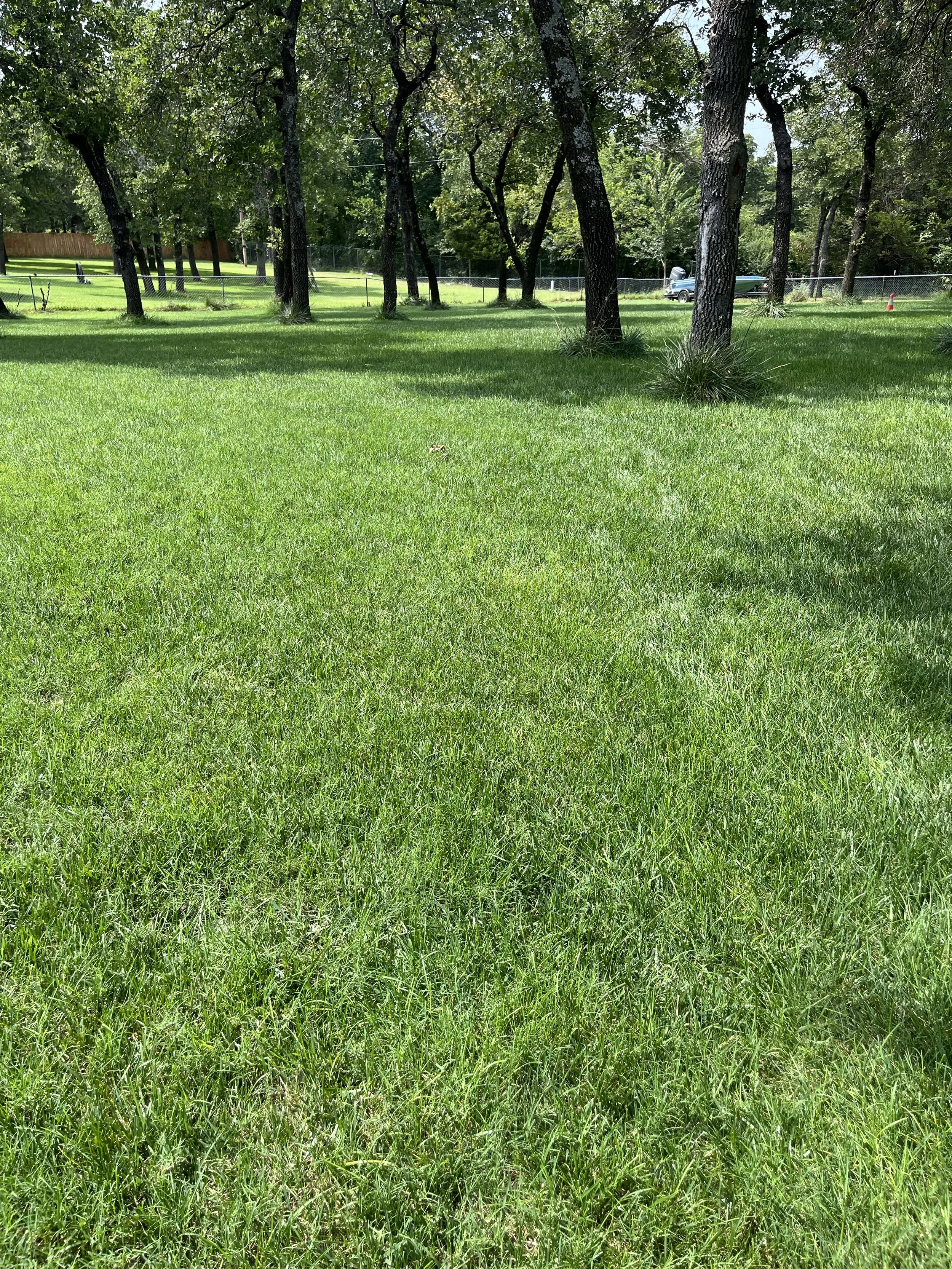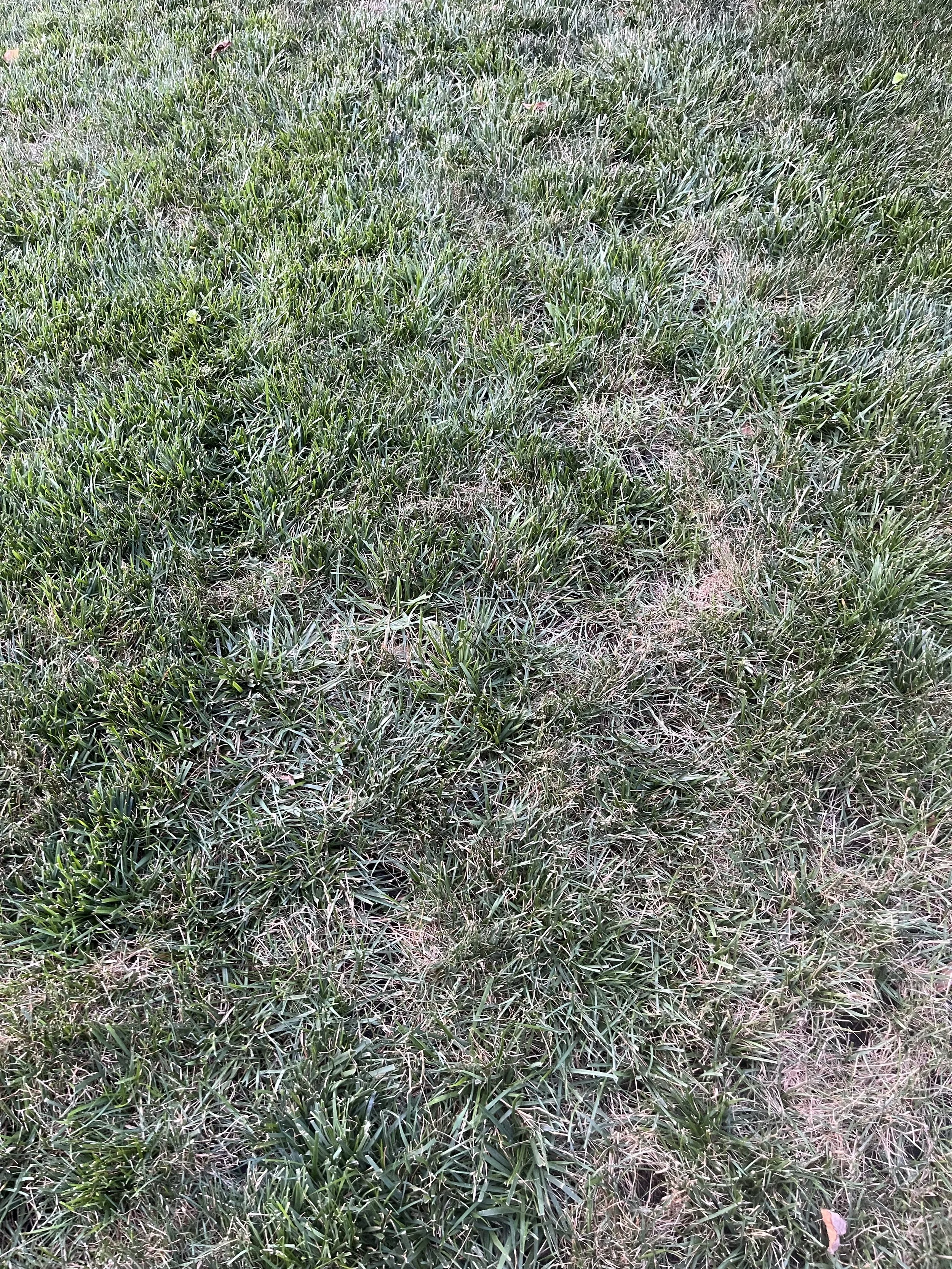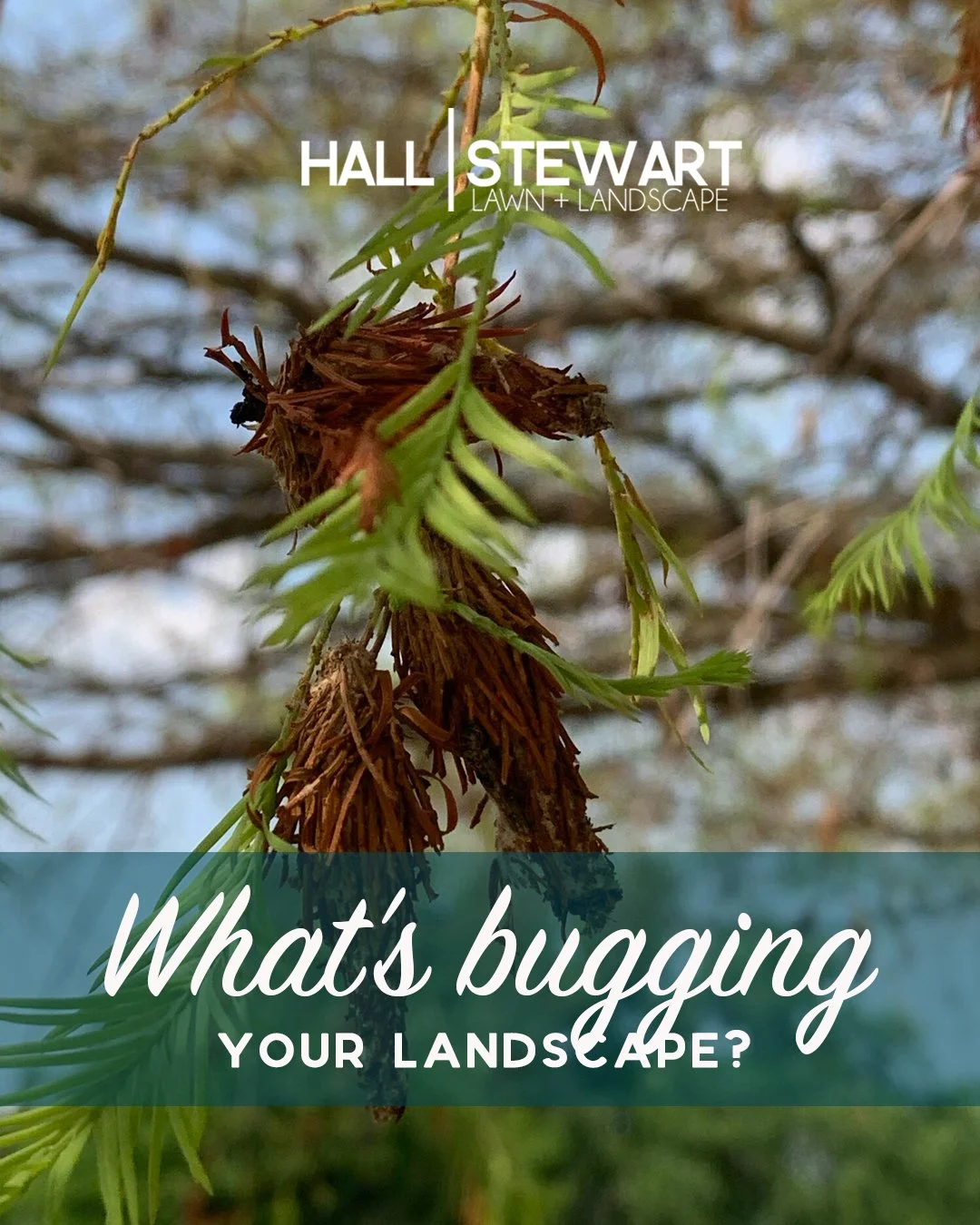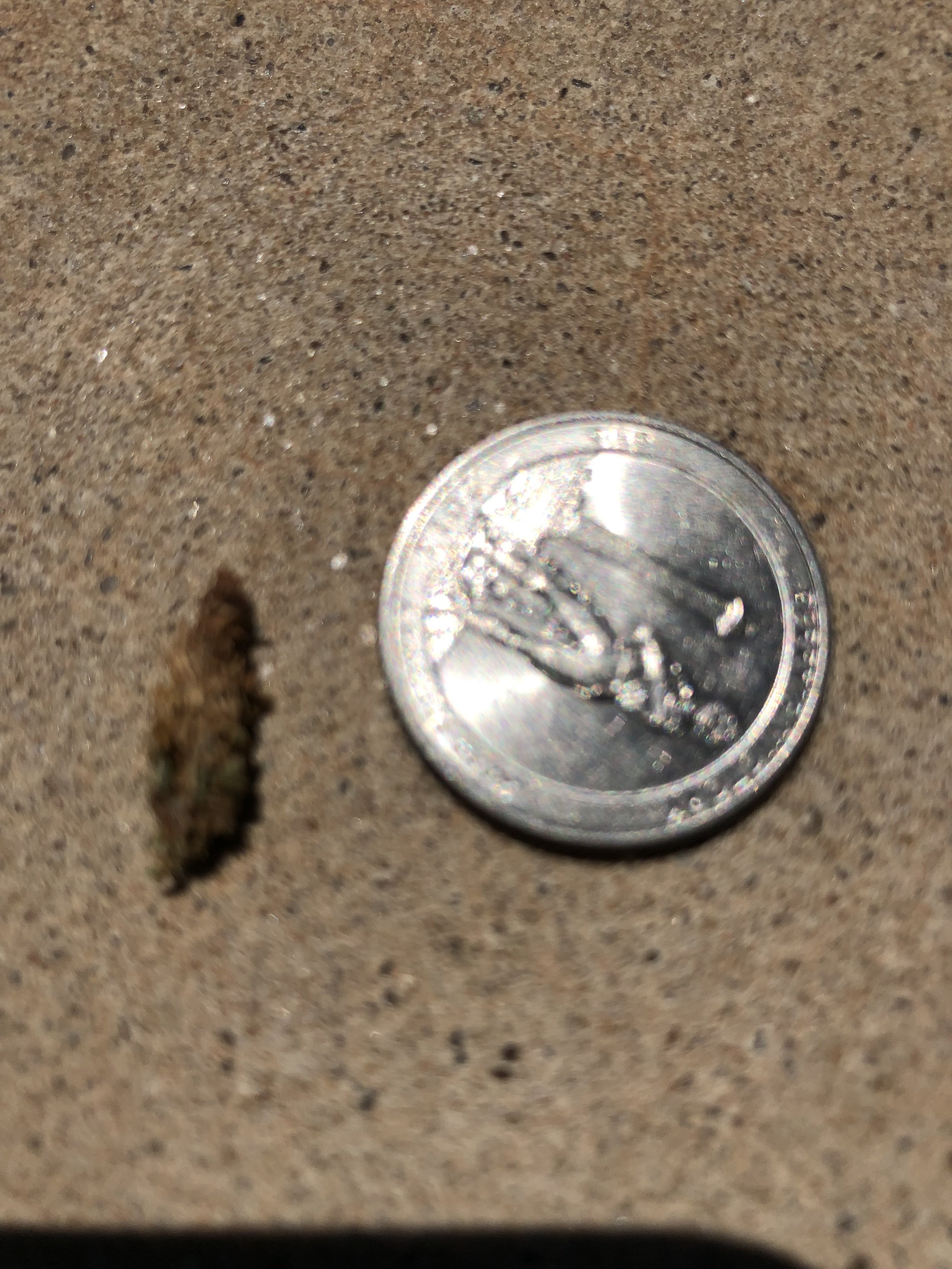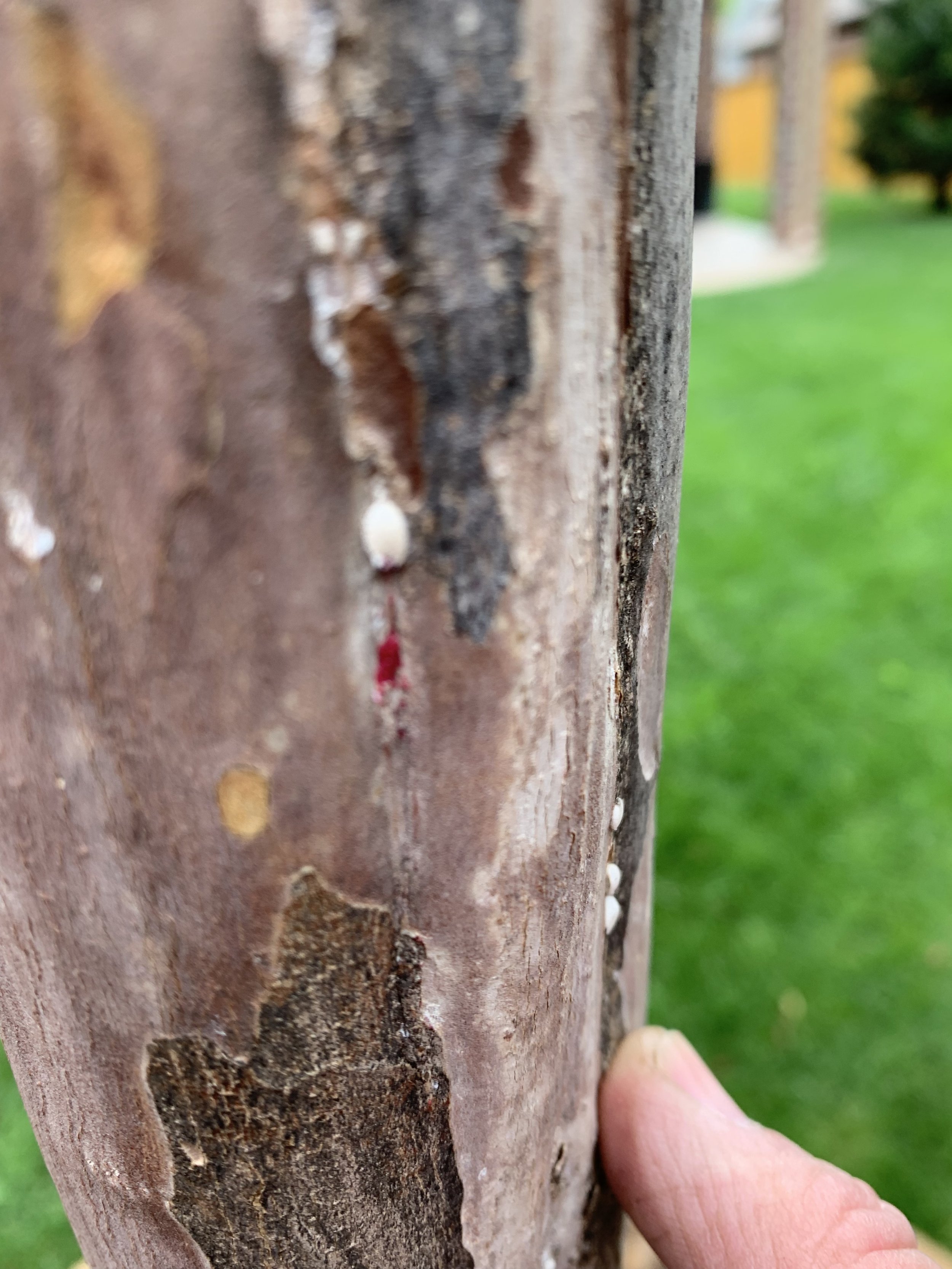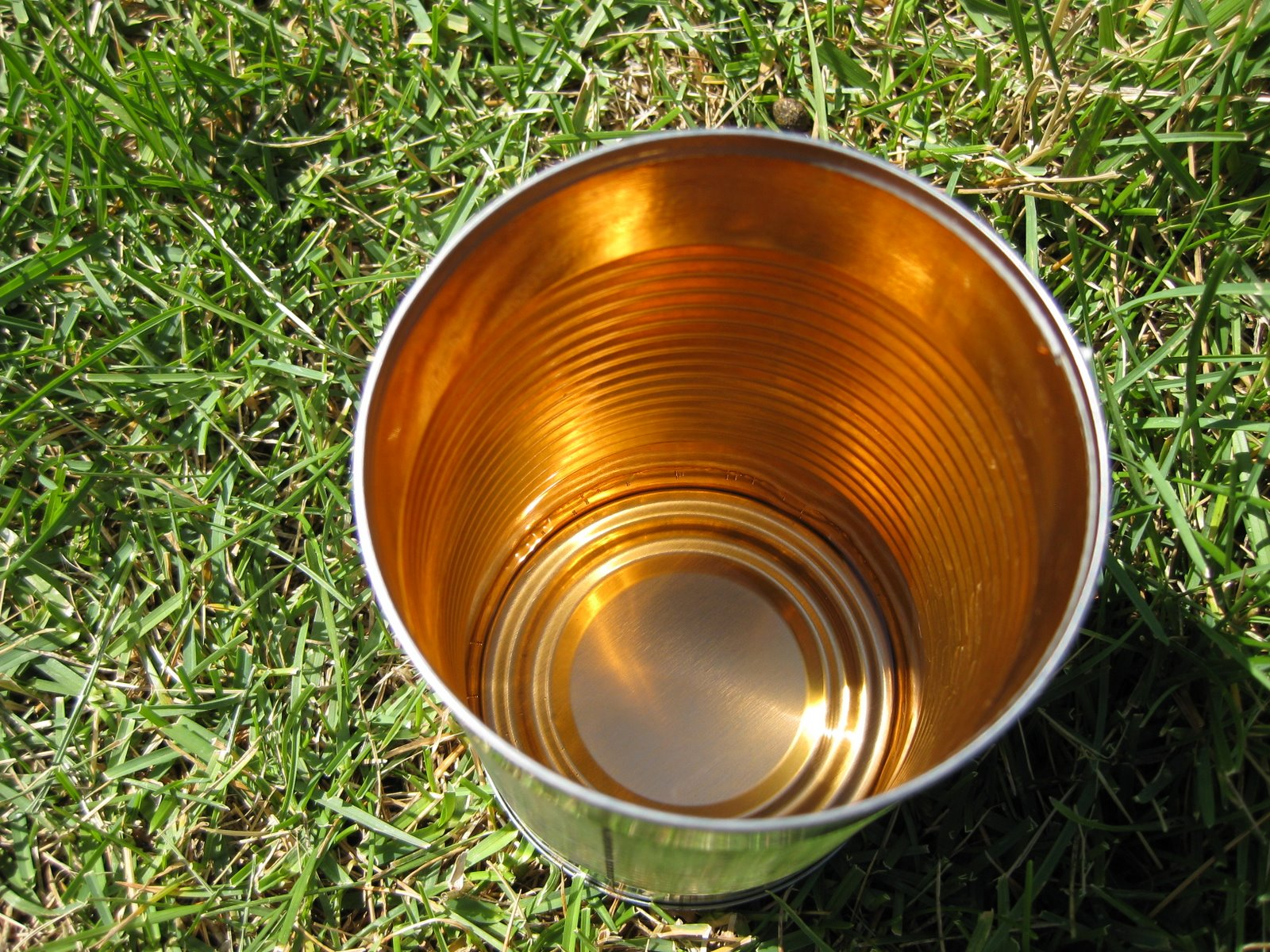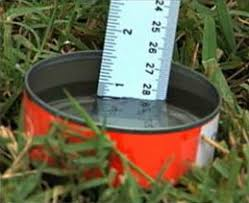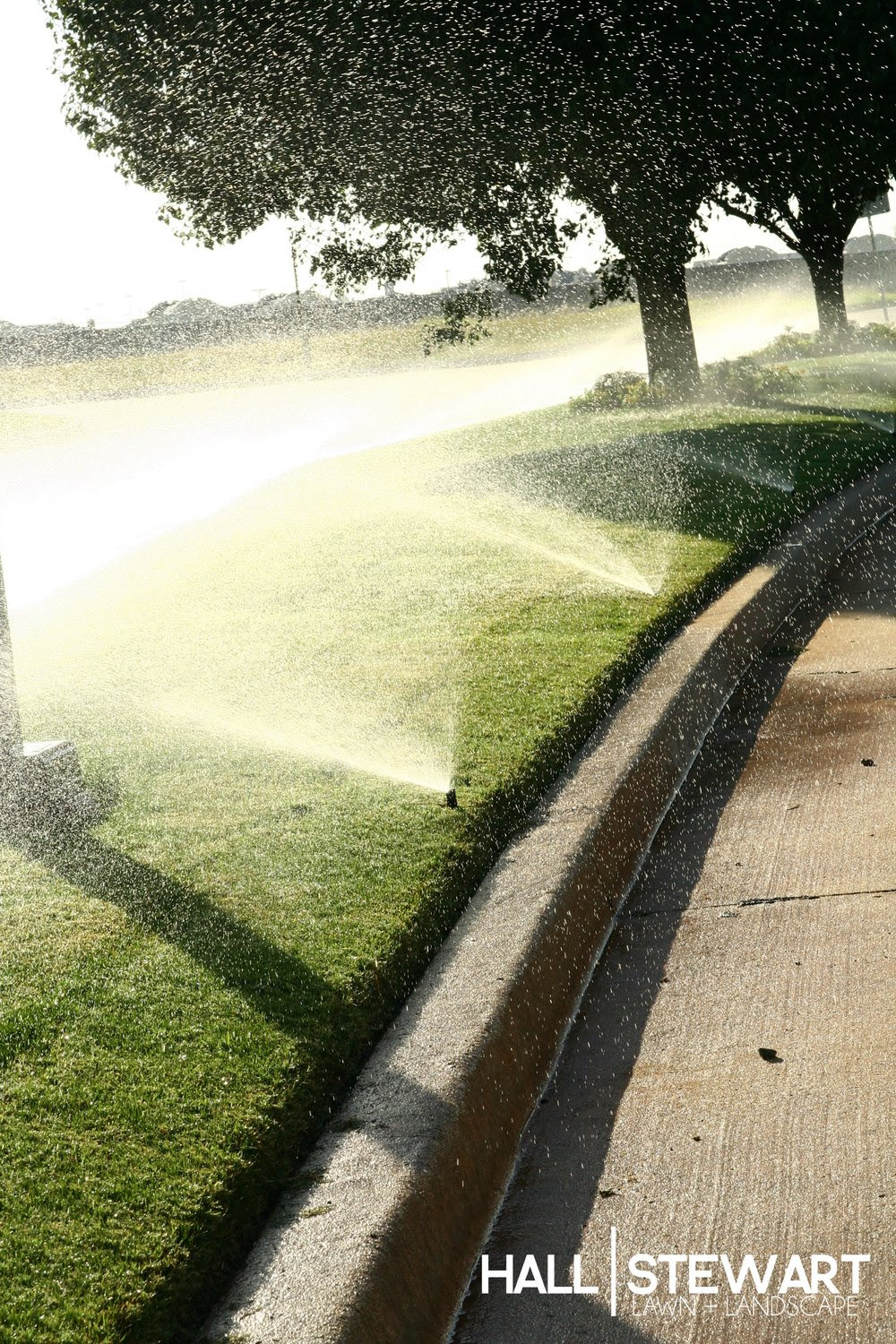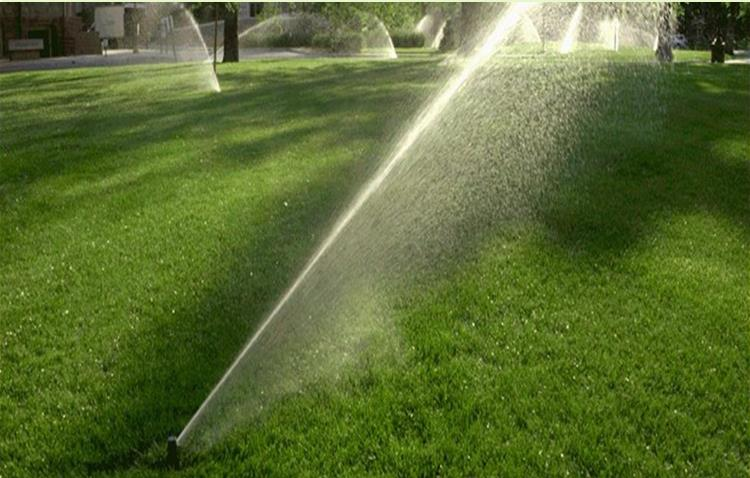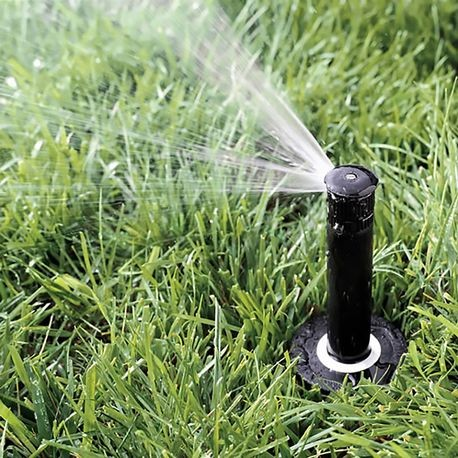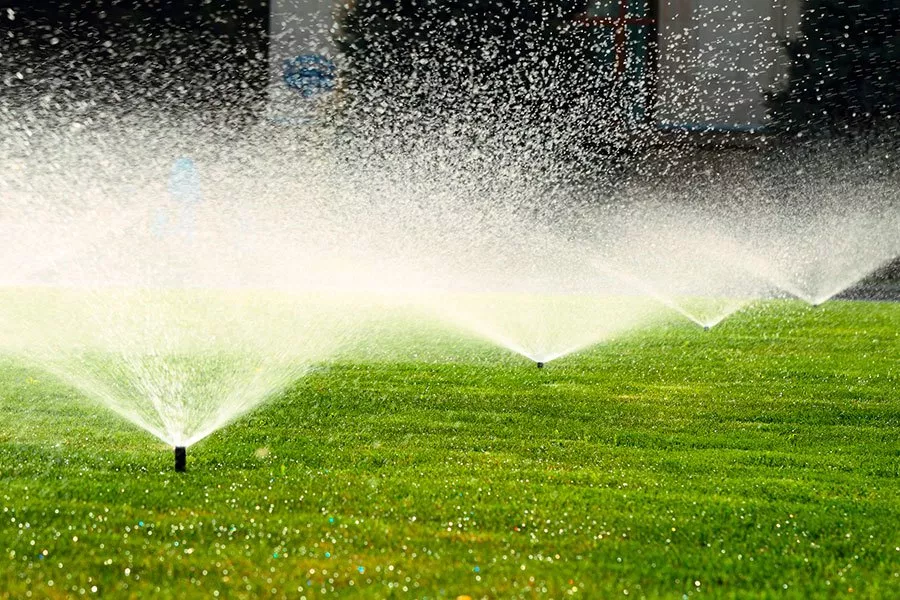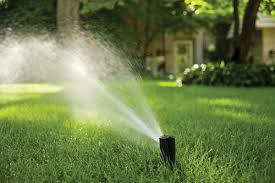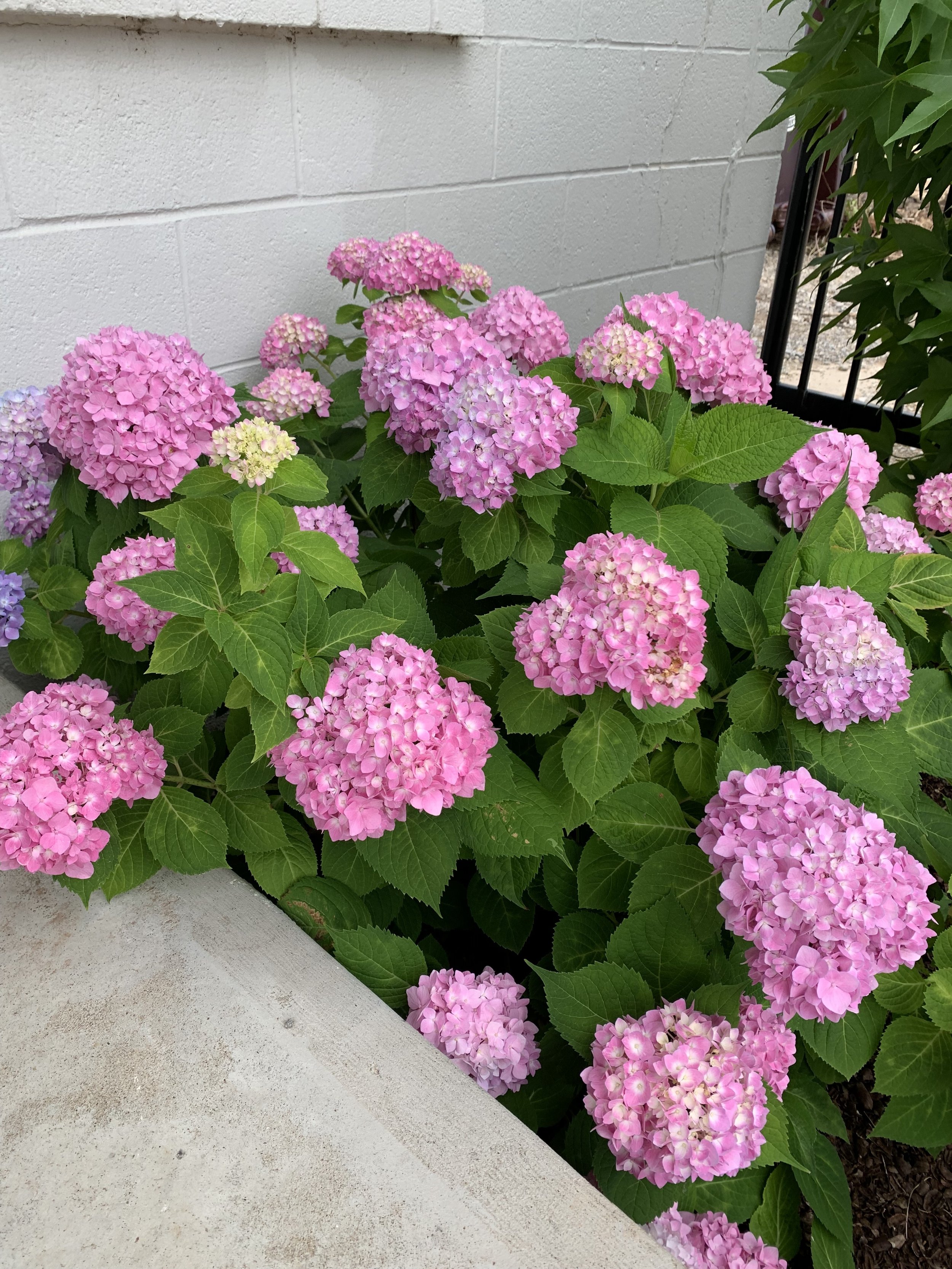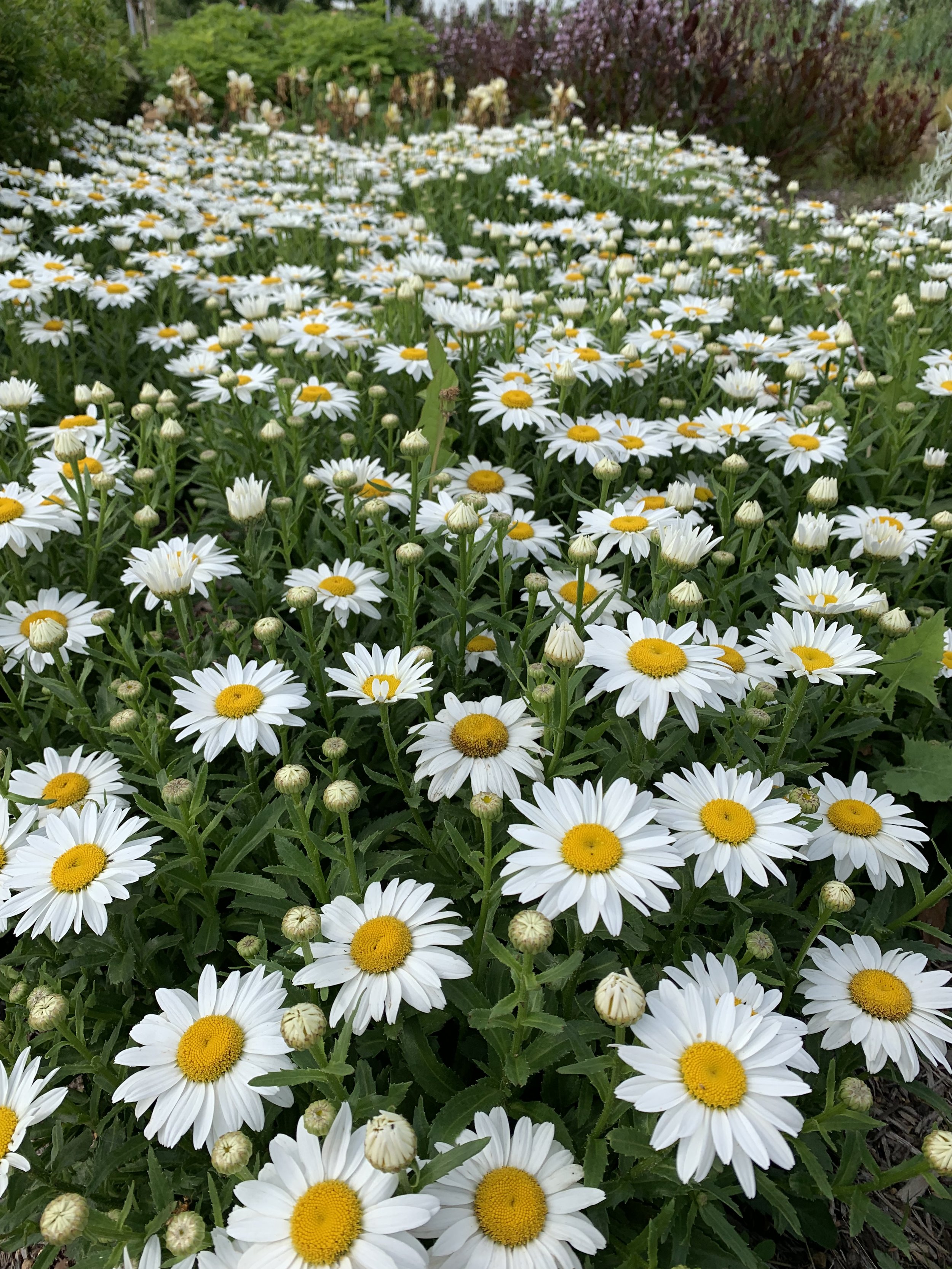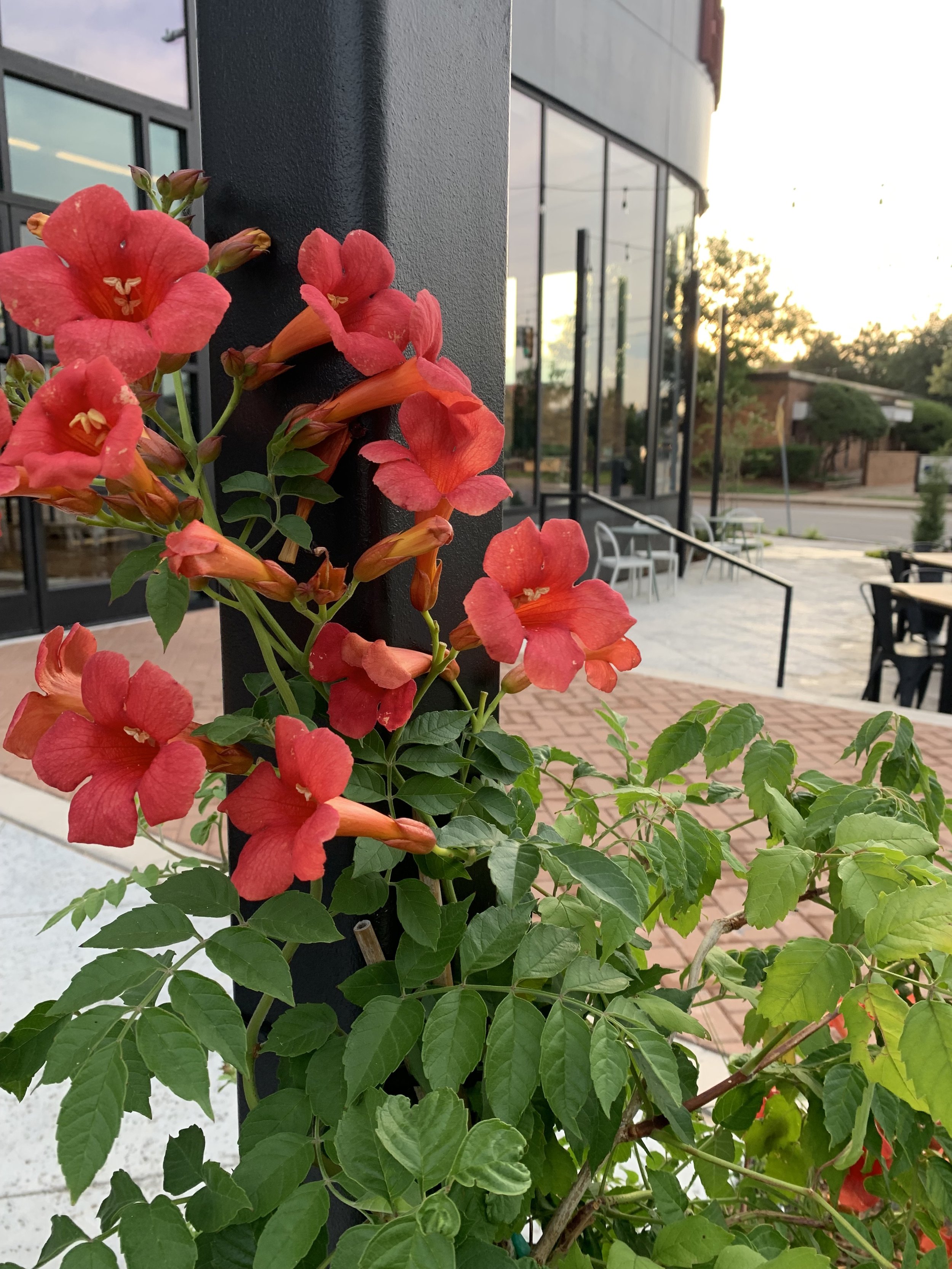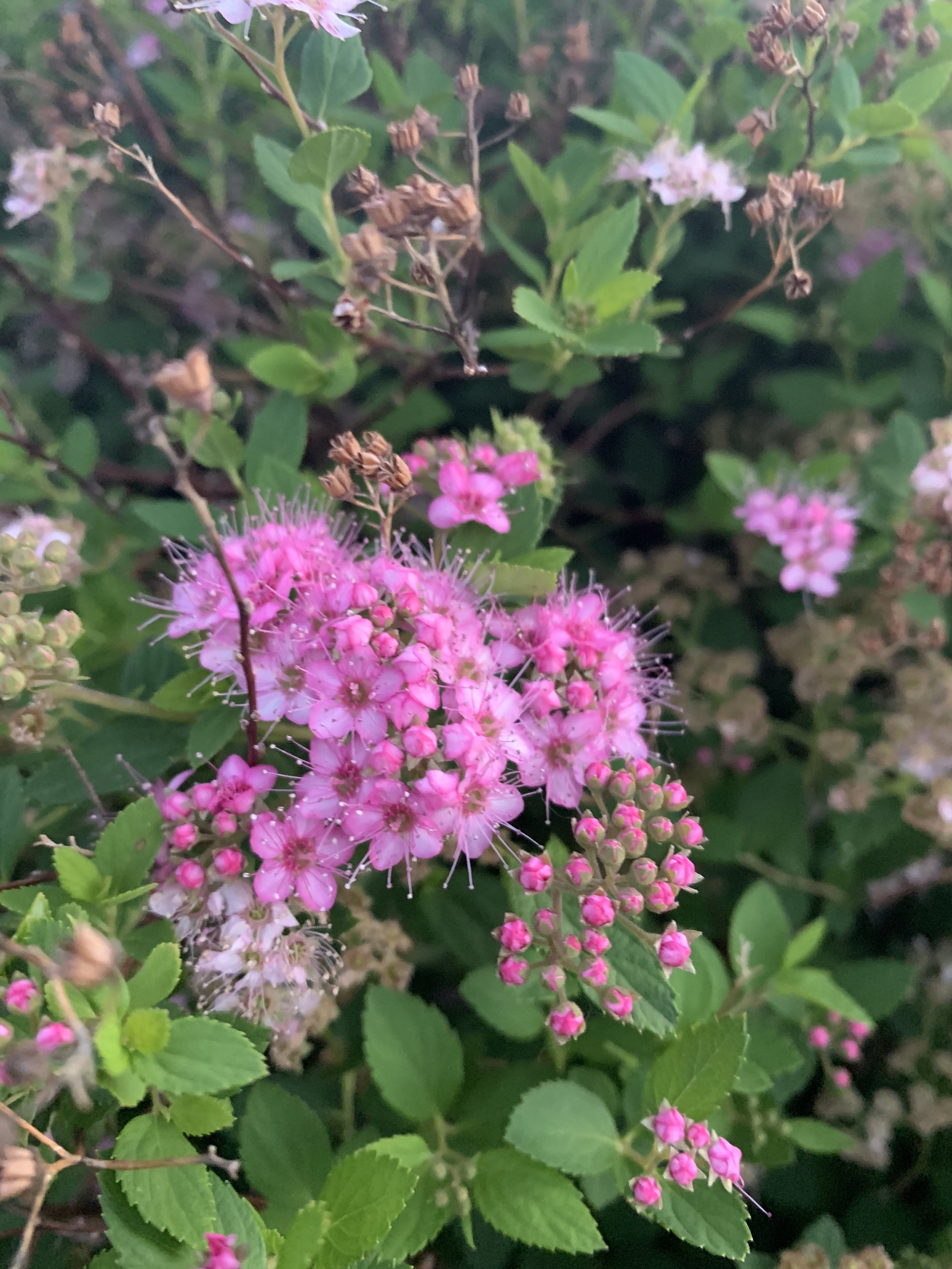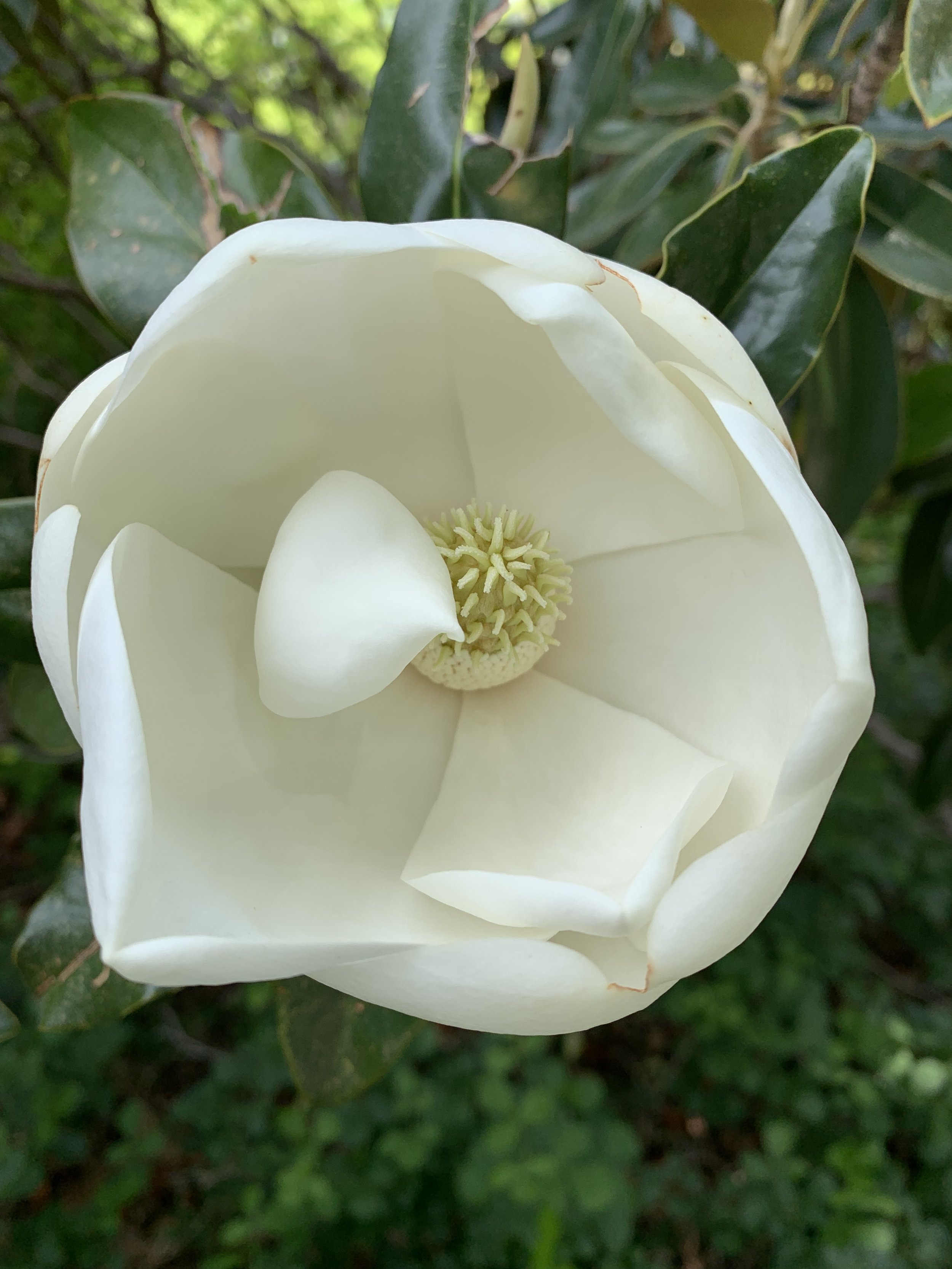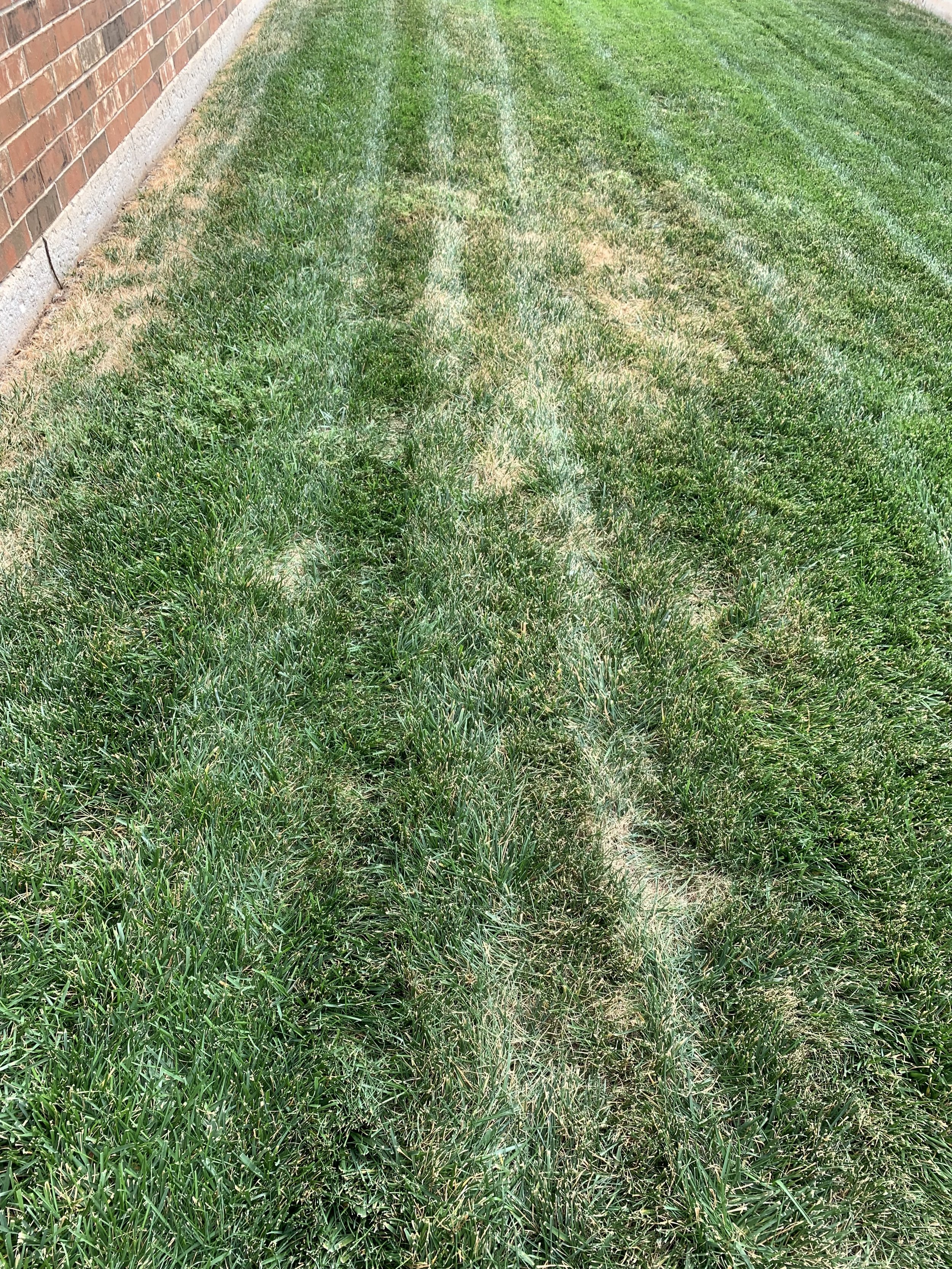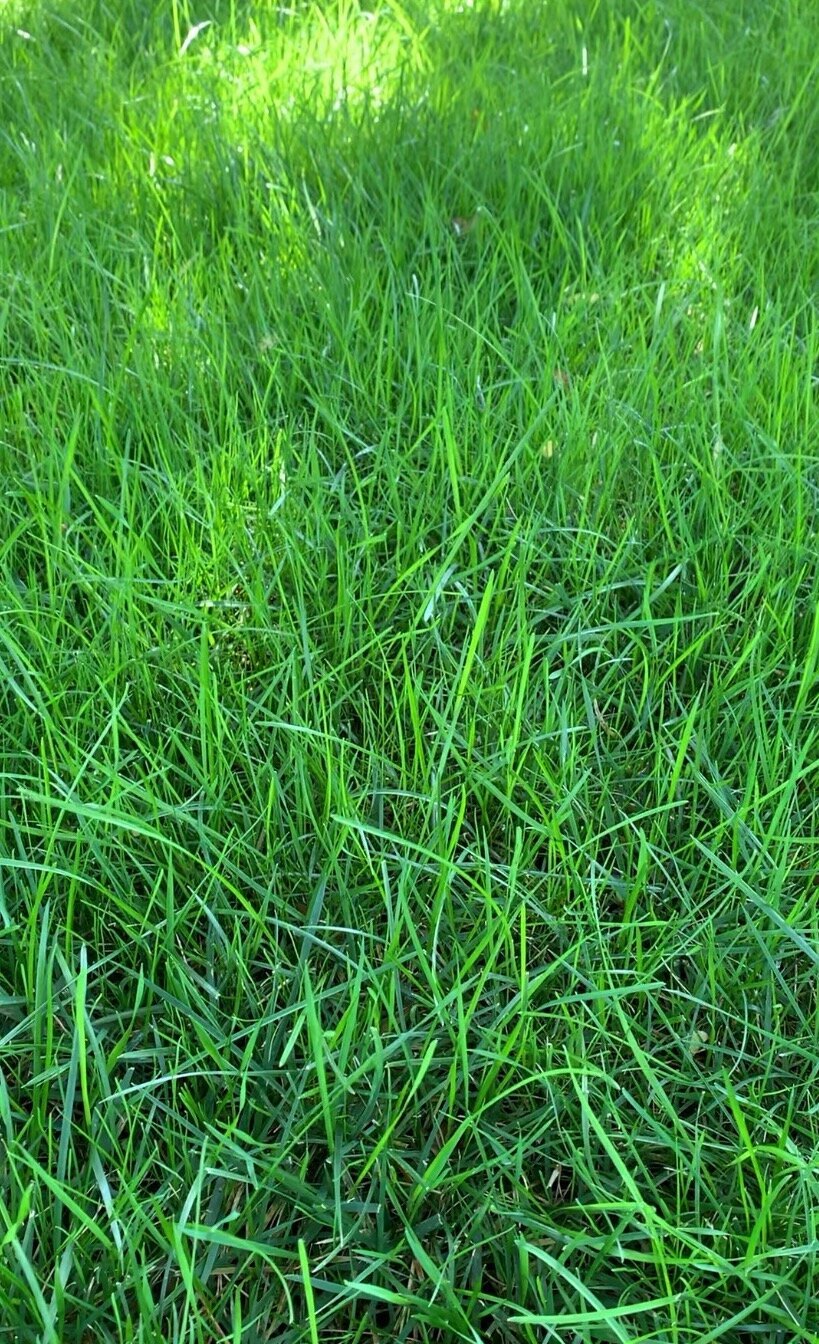
Fescue’s Summer Off Season
Question: What is one of the best things about living in Oklahoma?
Did anyone say: Living in the transition zone?
I’m guessing that was no one’s answer.
What is the transition zone? It is the area across the middle of the US between where warm season turf grows in the south and cool season grasses grow in the north.
The Transition Zone is the area of the country you can choose to grow either warm season or cool season grasses.
Bermuda is the common warm season turfgrass in our region. The advantage bermuda has is it loves the summer heat and as long as it receives moisture, it will be at its best in July and August.
Fescue is the cool season option. Fescue tolerates more shade and stays green nearly year-round. You can’t beat the deep rich color in the spring and fall. Fescue stays green well into December, often keeps some color through the winter, and as soon as the winter starts to break in early March, fescue bursts back to life.
Both have their off seasons.
Bermuda’s off season starts in November and continues until April. During this time, it goes fully dormant and turns straw-brown for months.
When is fescue’s off season?
Yes, fescue loses its green color in the winter and stops growing. So, yes, fescue has an off season in the winter, but much shorter than bermuda. Fescue goes through another slump in July through August when temperatures above 95 degrees are common. During fescue’s summer off season, growth slows and the color isn’t as intense. But, when a fescue lawn is healthy and growing under the best conditions, the summer off season is barely noticeable.
In April, customers with bermuda lawns often ask why their lawn isn’t as green as the fescue lawns on their block.
And, right now with 10 consecutive 90+ degree days, customers with fescue lawns are asking questions about why their fescue isn’t looking as good as it did in June.
Fescue lawn with dappled sunshine.
July through August is fescue’s second off season while bermuda is at peak season!
Bermuda will always have more color than fescue in July and August, but March through June and again October into December, fescue will always win the color battle.
Fescue when watered and mowed properly in full sun in the heat of the summer.
How do you keep a fescue lawn looking its best in the summer heat?
Let’s run through a list of best and worst practices for fescue during its summer off season.
Best practices for keeping fescue looking good during July and August:
Mow fescue at 3” – 3 ½”. The more leaf space the better color and the more drought tolerant the lawn will be.
Water deep. Water infrequent. Water in the early morning. Fescue lawns that are receiving 1 ½” of moisture per week, on an every other day schedule, only in the morning, look the best in the heat of summer.
Fescue lawns that receive at least some dappled sunlight and are in areas of good air circulation look the best during the summer heat.
Fescue lawns that are aerated in the fall have stronger root systems and can better withstand hot, dry days.
A properly watered and mowed fescue lawn last year during the first week of August.
Worst practices for fescue during the summer heat:
Don’t over water. Short, frequent watering does far more harm than good. It is a myth that fescue needs watered daily during the heat of July and August. When temperatures are hot and fescue stays wet for more than 6 hours at a time, brown patch will damage the turf. When brown patch starts spreading in a fescue lawn, it looks like the lawn needs more water. The natural response is to water more which makes the problem worse. It is common when making site visits where customers are concerned about their fescue to discover brown patch is the problem. Often the homeowner has increased watering to two times per day, morning and evening, every day trying to keep the fescue alive, all the while making it worse.
Brown patch in fescue.
Fescue with a mild case of brown patch.
Brown Patch is a result of fescue staying too wet when temperatures are warm. This year has been a perfect season for brown patch to flourish. Now that we have received two weeks of 95+ degree weather, areas weakened by brown patch in June are starting to show stress.
Heavy shade and low air circulation. Fescue performs best if it receives some sunlight every day. Fescue will tolerate more sun than most realize and does well in full sun when it is watered and mowed properly. Air circulation plays the important role of drying the leaf blades between watering cycles. Small backyards, privacy fences, and heavy shade are the hardest on fescue in July and August. This week Hall | Stewart Lawn Care Specialists have visited several fescue lawns with good air flow and dappled sun resulting in healthy fescue with good summer color while in the same lawn there is thinning/fading fescue in areas with low air circulation and deep shade.
Fescue cut too short. Remember leaf blades store moisture the plant needs to withstand the summer heat. Fescue survives through July and August best when it is cut at 3” to 3 1/2”. Every fescue lawn I have seen this week that is being maintained below 3” is struggling. If your fescue is less than 3” tall, don’t mow again until it reaches 4”, then remove only ½” to 1”.
Tight clay soil that has never been aerated resulting in shallow rooted fescue that will struggle in the heat.
Drought stressed fescue.
If your fescue is losing a lot of color check the soil. If it is dry, increase water by deep soaking in the morning every other day. If the soil is moist, then the problem is brown patch.
Fescue seeded over Bermuda in full sun in the heat of the year.
Fescue in full to dappled sun in July.
During fescue’s offseason, take a stroll around your lawn and start planning for the fall. The cooler days of September will be here soon.
Do you need to make some changes to how you are mowing and watering your fescue?
Are you trying to grow fescue in full shade, in a location where there is little wind movement?
If so, can you improve the conditions, or should you consider transitioning to a shade tolerant ground cover?
Or, are you OK with knowing the area needs to be overseeded with fescue every fall, will look wonderful for 9-10 months, fade for a couple of months, and then repeat the cycle again after fall overseeding?
If your fescue didn’t perform well due to the excessive moisture and high humidity of the early summer, or if it has struggled with brown patch in the heat, start making plans to overseed this fall.
Do you have areas of the lawn that are becoming too shady for bermuda? Bermuda starts to thin anywhere it does not get at least 6 hours of direct sunlight every day. Is this the fall to start establishing fescue in those areas?
Whether you have a full fescue lawn, or just some fescue in shady areas, don’t fret, fescue’s best season is just a few weeks away!
Lorne Hall
Hall | Stewart Lawn + Landscape
(405)367-3873
What’s bugging your landscape?
In last week’s July Lawn & Landscape Tips, we touched briefly on common insect issues at this time of the summer. This week lets dive in a little deeper.
Healthy landscapes are a result of an Integrated Pest Management program.
The first step of an IPM approach is maintaining healthy plant material with proper watering, feeding and pruning. Insect activity increases on plant material that is already stressed.
The second step is simply monitoring your plants. Weekly observation is critically important. Does the overall plant color look healthy? How do the leaves look?
Our landscapes represent large investments in both time and money. They add curb appeal and provide enormous benefits to the environment.
It is important that we do all we can to keep them healthy and growing.
Here are a few of the problems that we are either currently seeing in landscapes, or we have on our watch list:
Be on the lookout for any plants that don’t look their best. Notice the slight color difference between these two Taylor Junipers? After close inspection, bagworms were found feeding on the one on the left.
Bagworms
Timing - Eggs hatch in May and they remain active through September.
½-2” long spindle shaped bag wrapped in the foliage of the host plant. Young bagworms are very hard to spot.
Favorite host plants are juniper, arborvitae, spruce, pine and cedar. But they can attach themselves to deciduous shrubs and trees and we are seeing a lot of bagworms on deciduous trees this year!
Females lay eggs in bags left on plants over the winter. One female bagworm will lay as many as 500 eggs. The eggs hatch in the late spring and tiny larva crawl out and start feeding. As they feed, they use silk and plant materials to protect and camouflage themselves. Bagworms can strip a plant of foliage.
Heavy infestations, particularly on the same plant year after year, can completely defoliate a plant. Defoliation of needle evergreens, such as junipers and cedars, usually results in plant death. Broadleaf evergreens and deciduous plants typically are not killed but a weakened and more susceptible to other insect and disease problems.
When there are only a few, control is best by hand picking. If you have a large population an insecticide treatment should be made as soon as they are noticed. Try to remove any bags left on plant material in the fall. Bags left on the plant will serve as cocoons for females to lay more eggs. When removing bags, destroy them. Do not pick and toss on the ground as the worm will crawl back to a plant.
Bagworms produce silk threads to move locations.
Bagworms use the leaves of the host plant to protect themselves while they feed. This bagworm came off an elm tree, not a typical host plant for the caterpillar.
Bagworms can strip a mature Bald Cypress of its leaves quicker than you would expect.
Although not as common bagworms will feed on deciduous trees. If you notice skeletonized leaves, look close, most likely there are bagworms attacking the tree.
Young bagworms are small and can be hard to see. They wrap themselves in the plant needles making them hard to notice.
If you notice a juniper or cedar starting to loose color, inspect for bagworms.
Left untreated, large, heavy infestations of bagworms will kill mature trees and shrubs.
If there are not too many, the best way to control bagworms is to simply pull them off and throw them away. Don’t throw them on the ground, if you do they will crawl back onto the tree.
APHIDS
Timing – Species start producing in April and increase rapidly as temperatures increase.
A small, soft-bodied insect that is nearly invisible to the naked eye. The honeydew, sticky substance they excrete is the easiest way to know aphids are active. Colonies develop on the underside of the leaf and often are not noticed until the sticky substance starts to show.
They feed on the leaves, stems and buds of a wide variety of plants throughout the growing season. Usually, they attack the succulent new growth.
Aphids generally do not cause serious harm to mature plants, although they can be harmful to young plants. Heavy populations can cause wilt and yellowing of leaves as the sap is removed. Blooming trees and shrubs will see a reduction in flowers. Aphids can promote sooty mold, a fungal disease, and spread viruses.
Early detection is the key. Aphids mature in 7-10 days and can produce 40-60 offspring resulting in population explosions in the thousands within a few weeks.
When populations are small, a high-pressure blast of water can be used to wash the insects off the leaves. Wiping the leaves with a soapy solution is also effective with early detection. In most cases, once you notice the honeydew, it is best to treat with an insecticide. A dormant oil application in the winter is helpful in reducing populations the following season. Lady bugs can be used as a beneficial insect control when populations are small.
Aphids are small and often go unnoticed but the sticky substance they leave behind is easy to spot.
Aphids feed on the underside of the leaf and become noticeable as the leaf becomes covered with the sticky substance they excrete.
SPIDER MITES
Timing – They are active from early summer through fall. The hotter and drier the weather, the more severe the problem will become.
Very small (1/60 of an inch) that live on the underside of leaves and survive by sucking on the cell content of the leaves. First shows up as stippling of light dots on the leaves. Leaves then turn from bronze, to yellow, and then fall off.
They get their name from the small silk protective webs they create.
Because spider mite damage can look like many other plant problems, the best way to determine if it is spider mite is to shake the plant leaves over a white sheet of paper. Spider mites will look like tiny moving black dots on the paper.
Spider mites reproduce rapidly when conditions are perfect. Spider mites can hatch in as little as 3 days and become mature within 5 days. One female can lay up to 20 eggs per day during their 2-4 week life span.
The best control results from making two applications 7-10 days apart.
Adequate plant moisture during the hottest time of the year helps prevent population explosions.
Early signs of spider mites.
To know if you have spider mites shake leaves over a white sheet of paper.
Spider mites will look like tiny moving black dots.
Silk protective webbing formed by the spider mite.
CRAPE MYRTLE SCALE
Timing – Females lay eggs from May through September. Crawlers emerge within a day or two and spread to new areas of the plant.
The scale is white to gray and exudes a pink blood-like liquid when crushed. Initially you will notice a black sooty mold on the twigs and trunks of crape myrtles.
Bark scale is difficult to control without the use of a systemic insecticide to kill the sucking pests.
Inspect new plants for scale before purchasing.
Scrubbing the bark with a soft brush and mild solution of dishwashing soap and water will remove many of the females and eggs as well as remove the black sooty mold.
A dormant oil application in the late winter to early spring is an effective way to reduce scale populations.
This 25 year old Crape Myrtle was suffering from Crape Myrtle Scale last year. One year after trunk injections of a systemic insecticide and the mature tree is once again healthy and insect free.
White scale attacks Crape Myrtles leaving a black sooty substance on the bark.
SOFT OAK SCALE
Timing – One generation per year. Crawlers emerge in June, feeding and spreading on the branches.
They are convex in shape resembling a helmet, brown and ¼” in size. Crawlers are small and pale in color.
Scale feeds on the fluids in the vascular system.
They produce honeydew which is a source for attracting ants and other insects.
They rarely kill the tree but open up wounds that provide entry for other damaging pathogens.
When populations are allowed to increase canopy damage may occur along with discoloration of the leaves.
Application of an insecticide via spraying needs to occur in June when the crawlers are active. Annual spray applications in June are required until the populations are under control.
An alternative treatment is trunk injections of a systemic insecticide. Trunk injections allow the insecticide to be readily distributed throughout the plant’s vascular system to the fluids the scales feed on.
Soft Scale are small brown convex shaped insects on oak tree branches.
WEBWORM
Timing – The first-generation spin webs in July and later generations create webs in September to October.
Caterpillars weave a loose web around tree branches while they are munching on the leaves.
Favorite trees include hickory, mulberry, oak, pecan, popular, redbud, sweetgum, and willow. But you can find them on most ornamental shade trees when populations are heavy.
Early generations won’t cause long-lasting damage. They are just unsightly. The last generation can cause damage when the branch tries to rebud just before a killing frost. When this occurs, you can expect the affected branch to die.
The best control is to cut out any affected branches in the early generations when the webbing is small. Completely dispose of the branch as the worms will exit the webbing and return to a tree. If the web is too high or if the population has increased to the point that pruning is not possible, an insecticide application will be needed. The spray must penetrate the webbing to gain control of the caterpillars. Dormant oil applications are a good idea as worms overwinter in tree bark.
Even though early populations do not cause damage, early control is important. When left untreated, typically later generations’ populations increase.
Webworm caterpillars loosely weave webbing around branches to protect them while stripping a branch of leaves. When spraying, you mush have enough pressure to penetrate the webbing to gain control.
The webworm caterpillar weaves a loose web around tree branches to protect themselves while they are destroying your tree’s leaves.
The first generation of webworm started to show up in trees this week. Inspect your trees this weekend. The best control is to cut the branch out when they are small.
ARMY WORMS
Timing – Moths migrate from the Gulf Coast in June, lay eggs and the first-generation caterpillars start feeding in July. With a 28-day life cycle there can be 4 or 5 generations between July and November.
Army worms are always present in our summer lawns and landscapes. When populations are normal you may never know they are there. But, when conditions are right, as they were in 2021, we can see an explosion and experience turf damage.
Early caterpillars are green and very small. As they grow to 1 to 1 ½” they turn browner with reddish brown stripes on each side of the body and small back spots on the top. Their distinctive mark is an inverted “Y” on the front of the head.
Army worms will feed on any leafy, soft plant with plenty of moisture in the leaf. In 2021 they feasted primarily on fescue lawns because growing conditions were perfect for fescue. In previous outbreaks, army worms picked bermuda over fescue. If army worms are high in populations this summer, you can expect them to choose bermuda over fescue because the early summer heat has kept fescue from flourishing.
Watch for areas of the lawn that appear to have drought stress should not be. Test the area with a soap flush. Mix 1 teaspoon of dish soap with 1 gallon of water and pour over the surface. If you have army worms, they will come to the surface.
Treatment with a systemic insecticide when the worms are small before they become heavy feeders is best.
Can you count the number of army worms in this picture from August ‘21?
If you have areas in your lawn that are turning brown you can test for army worms by drenching the area with soapy water. If there are army worms present they will immediately come to the surface.
Army worms are present every year but in numbers that don’t usually cause turf damage. August ‘21 army worm populations were high enough they devastated areas of lawns in just a couple of days.
The best way you can protect your investment is to take a few minutes each week to inspect your lawn, shrubs, trees and flowers.
Hall | Stewart offers a Tree & Shrub Care Program based on an Integrated Pest Management approach focused on plant health. The program includes dormant oils to smother overwintering insects in the late winter, systemic insecticides in the early spring, inspection and treatment as needed in the summer, and fertilizer applications in both the spring and fall.
Complete control is much easier when insects are noticed early, and populations are small.
Please let us know if you have any questions or concerns about your lawn and landscape.
Lorne Hall
Hall | Stewart Lawn + Landscape
(405)367-3873
Summertime = water time!
Friday, June 20th marked the official start of summer. Known as summer solstice, it is the longest day of the year.
So, if it is officially summer, it means it is time to review best watering practices.
Wait a minute, didn’t a local weather person report this week that the past 60 was the 3rd wettest 60-day period in Oklahoma City? That is true. The metro area has received 23” of rain since mid-April. Another way to think of it… in the last 60 days we have received over 60% of our average annual rainfall or 36.5”.
Again, why are we talking about best watering practices?
Because, summer in Oklahoma means temperatures will rise and rainfall will decline.
Best watering practices start with being aware of current weather patterns and adjusting watering schedules.
Best watering practices need to be your number one focus in the landscape for the next few weeks.
Best watering practices will have the biggest impact on the health and appearance of your lawn and landscape for the rest of the summer.
Best Watering Practices:
Apply 1” to 1.5” of water per week.
Your lawn and landscape need 1” to 1.5” of moisture per week when temperatures are consistently 90 degrees or higher.
Which begs the question: “How long should I water?”
Every irrigation system is different – different head types, different size nozzles, different head spacing, different soils, different slopes, etc.
The best way to know how long you should water is to measure the amount of water your system puts out in each zone. Take a few cans and place them around your lawn in a random pattern. Run your sprinklers through a cycle and measure the amount of water in the cans. If the sprinklers ran for 15 minutes and you had .25” of water, that zone needs a total of 60 to 90 minutes of run time per week.
Next determine how long you can run your irrigation before there is excessive runoff. This will tell you how many times per week you need to water. If you can get away with watering every 4th day, you will have a healthier, stronger landscape.
If you don’t have the time to audit the amount of water your system puts out, start with these settings, monitor, and adjust:
Fixed spray pattern heads with 10-15’ spacings – 15 mins per time.
Larger rotor type heads on 20-30’ spacings – 30 mins per time.
My practice has been, using the best practices mentioned here, to water my fescue lawn every 4 days when temperatures are in the 90s and increase to every other day when the lawn shows signs of stress from lack of water.
Set your controller to water with back-to-back run times.
For most of our landscapes, if you run our sprinklers long enough to get the recommended amount of water, you end up with a lot of water running down the street. Splitting zone run time in half and setting the controller to run through the zones back-to-back will improve the amount of water that soaks in and reduce the amount of water that runs off.
Example: Set the controller to run at 4:00 AM and 5:00 AM. When the 4:00 cycle completes, even if it is past 5:00, the controller will start the second cycle.
I know from experience that moist soil will absorb more water than dry soil. Soil is just like the sponge in your sink. A dried-out sponge repels water before it starts absorbing water. Your lawn is the same. The first cycle moistens the soil and the second cycle soaks in.
Split, back-to-back, irrigation cycles are an old golf course trick. Large commercial irrigation controllers have had a run/soak cycle setting that waters a short time, delays, and then waters a longer time for years. Now, more and more smart controllers offer a run/soak cycle feature.
I started using split, back-to-back, irrigation cycles years ago on lawns with slopes.
After seeing great results, I started incorporating the concept on all lawns.
It makes a difference in watering efficiency.
Water in the early morning.
Evaporation is at the lowest point in the pre-dawn hours. Typically, wind is also at the lowest point of the day in the pre-dawn hours.
I prefer to set most irrigation controllers to start at 4:00 AM with the goal of having the cycle completed by 8:00 AM.
Avoid watering in the heat of the day when much of the water will be lost to evaporation. Also, avoid watering in the evening. Watering in the evening promotes many turf diseases because the lawn stays wet too long.
This is critical for fescue lawns. If fescue stays wet for more than 6 hours at a time and nighttime temperatures are in the 70’s, brown patch is unavoidable. Fescue performs best in the heat if it is watered deeply, and grass blades are dry by noon.
If you water your fescue lawn in both the morning and the evening during the summer because you “can’t seem to get enough water on it!”, your lawn isn’t struggling because it is too dry, your lawn is struggling because you have created the perfect conditions for brown patch, a fescue lawn’s worst enemy.
IMPORTANT: Don’t water fescue in the evening during the summer. When water remains in the leaf for more than 6 hours, brown patch disease will develop.
How much difference does infrequent, deep watering make when it comes to developing a drought tolerant lawn? This is a picture of a fescue lawn in full sun in August that is deep soaked every 4 days. The picture was taken in mid-August with less than a 1/4" rainfall in the previous 20 days.
Daily watering is not needed.
Unless you are trying to get newly planted seed to germinate or new sod to take root, there is not a good reason to water every day. Always water deep and infrequent. Daily, shallow watering creates a landscape that is shallow rooted and more dependent on constant moisture for survival.
Fescue will also benefit from deep soakings, every other day, through the summer months. Shallow, daily watering in the summer heat is very damaging to fescue. Again: Brown patch symptoms look very similar to drought stress. Typically, the more you water, the worse the fescue looks, so you add more water, and the cycle of decline continues.
A common myth I would love to dispel is that fescue requires a lot more water than bermuda. Yes, it does for a couple of weeks in the fall when you are trying to get newly seeded fescue to germinate, but mature fescue doesn’t require more moisture than bermuda.
Aeration improves moisture absorption.
You can’t beat aeration for improving your soil structure. A key benefit of improved soil structure is better water absorption. Lawns that receive annual aeration (or at least every other year) do not experience as much runoff.
Head to head coverage is when the water from one sprinkler head reaches all the way to the next head. Without head to head coverage, dry areas can develop around heads.
Fixing uneven water patterns in your lawn may be as simple as making sure heads are straight. A leaning head will result in uneven water distribution.
A clue to an uneven watering problem is an arc pattern matching the sweep of an irrigation head.
Always pay attention to water needs.
If we receive 1/2” of rain or more, turn your controller off for a few days. Install a rain sensor if you are not good at remembering. A rain sensor will pay for itself easily in one season.
Just because it is summer, don’t assume you can leave your controller in automatic and forget it.
Don’t stress if your lawn and landscape gets a little dry, it will rebound quickly once water is applied.
A good indicator that your lawn needs water is the footprint test. If the grass retains your footprints instead of quickly springing back, it is time to resume watering.
Watch for uneven water patterns.
If you notice areas where the lawn color is fading, you may have uneven moisture patterns. This could be the result of a broken head, clogged nozzle, or a head that is out of adjustment.
Even if you don’t have an irrigation system, the concepts of good watering apply.
It is important to learn how long you need to water when you are using a hose end sprinkler. Next time you water, set out a few cans. You will be surprised how long you need to water to get the proper amount of water on your lawn.
Invest in a digital hose water timer, such as the ones made by Orbit. It will make it easier for you to control the timing and frequency of watering.
If you need help in determining your lawn and landscape’s water needs, let us know.
We can schedule an irrigation audit for your lawn and landscape. We will inspect for uneven water distribution, absorb water rates, make recommended irrigation changes, and set the controller for optimal operation. Give us a call if we can help – (405)367-3873.
A healthy landscape is an important part of our environment.
A healthy turf helps clean the air, trap carbon dioxide, reduce erosion, improve groundwater quality, absorb noise, reduce temperatures, as well as adds cub appeal and value to your home.
A key component to a healthy landscape is correct water usage.
Lorne Hall
Hall | Stewart Lawn + Landscape
(405)367-3873
June Lawn & Landscape Tips
Hello Summer!
June… a magnificent month for your lawn and landscape!
June is the month when both cool season and warm season turf look great.
June is the month when an abundance of perennials add color to the landscape.
June is the month when shrubs are covered with soft, tender new foliage and so many blooming shrubs are adding splashes of color.
June is the month summer blooming trees start adding color to our world.
June is the month to discover a new favorite tree, shrub, perennial or summer annual color. What will be your favorite this June?
Awe…June is the month when all your lawn and landscape work this spring rewards you with enjoyable evenings on the patio.
Wait…don’t get too comfortable, it is summer, and your lawn and landscape still need attention:
June is the month for day lilies to add splashes of color to the landscape.
Mowing
Good mowing practices will have the biggest impact on the quality of your lawn over the summer months. For the best summer turf, get into a routine of mowing often enough that you only remove 1/3 of the leaf blade with each mowing. For bermuda and zoyia, both warm season turfgrasses, this may require mowing every 4 to 5 days. If you mow this often, don’t bag your clippings. The top 1/3 of the grass leaf is 90% moisture and nutrients. The best summer height for warm season turf is 1.5 – 2.5”. Fescue, cool season turfgrass, will continue to grow rapidly during early June but once we consistently have temperatures in the upper 90’s it will begin to slow down. The best height for cool season turf in the summer is 3.0 – 3.5”. Both warm season and cool season turfs don’t respond well to being cut below their recommended height. Cutting the lawn too short discourages root development and having deep roots going into the summer heat is important for both warm and cool season turf.
Increase the mowing height on fescue lawns to 3” to 3.5” inches June and maintain that height through the summer.
Fertilizer
Bermuda lawns should be fertilized this month with a higher nitrogen, slow-release fertilizer. The goal in June is to create a healthy bermuda lawn that will thrive in the summer heat. Fescue lawns should only receive low nitrogen, root stimulating fertilizer during June to prepare them for the summer heat.
One of the biggest concerns we have for fescue lawns right now is too many are being cut too short. Cool season lawns will do better in the summer heat with more leaf space. If you have a fescue lawn, gradually raise your mower to at least 3” this month. I started mowing my fescue lawn a ½ notch higher in May and will increase it another ½ notch this week.
Endless Summer Hydrangea are gracing the landscape with their first blooms for the summer.
Weed Control
If you subscribe to Hall | Stewart’s Lawn Care Programs and have not skipped any applications this year, your lawn has had two pre-emergent applications. This will provide your lawn with a good barrier to prevent summer annual grassy weeds. But, if not, you may have some grassy weeds, the most common is crabgrass, showing up in your lawn. June is a good month to control grassy weeds while they are still young plants. Once they mature, stronger products will need to be used which can cause turf damage. If nutsedge is making an appearance in your lawn, it is best not to pull it. When you pull nutsedge and do not remove the nut below the surface, the plant becomes stressed and multiplies.
You can expect to see Black Eyed Susans, a perennial brighten the landscape this month.
Crabgrass is a very fast growing summer annual grassy weed. If you did not get a pre-emergent on your lawn early this year, you are almost certain to have crabgrass growing in your lawn. Treat now with a grassy weed control herbicide. If you wait until July to control, harsh products that will damaged desirable turf will have to be used.
Tree & Shrub Care
The best thing you can do for your trees and shrubs this month is give them your attention. Make it a routine to walk around the landscape looking for plants that just don’t look their best. Most insects are great at camouflage and are hard to spot before you have damaged leaves. Start watching for spider mites. If you notice pale and specked foliage, shake the leaves over a white sheet of paper. If you see tiny specks that start to move, you have spider mites and should schedule a treatment. Be on the watch for bagworms on needle evergreens. When they are young, they are hard to spot. If you notice your evergreens losing color, there is a good chance bagworms are the problem. With all insect and disease issues we subscribe to an integrated pest management approach. With our Tree & Shrub Program, we inspect for issues with each visit. Most problems are easier to control the earlier you notice them. If you notice any issues with your plants, please let us know.
If you notice pale or speckled foliage on boxwood shrubs, shake a branch over a white paper. If you see tiny specks that start to move, you need to spray for spider mites.
As temperatures warm up in June be on the lookout for aphids.
Soft scale can be a problem on Redbud trees. A small 1/16-1/8”, reddish, oval scale that is often found on small twigs and can cause small branches to die if not treated. A treatment plan in late winter with a dormant oil with follow-up treatments in late spring and early summer with a horticultural oil is required.
The lacy blooms of June are a wonderful contrast to the big leaves of the Oak Leak Hydrangea.
I’m always on the look out for new landscape plant materials. This year we have planted a few Orange Rocket Barberry. Typically Barberries have an oval or spreading growth pattern. But the Orange Rocket is known for its upright, compact growth habit.
June is the month an old fashion plant, Rose of Sharon, shows us why we should add tried and true plants to our landscapes.
Bag worms start out small and hard to see. Take time to inspect your needle evergreen shrubs this month.
Do your landscape a favor and keep an eye out for bagworms. They are much easier to control when applications are made early.
Bagworms start out very small and are hard to see. Take time to inspect your needle evergreens before they cause damage.
Annual Color — Sunpatien and Joseph’s Coat
Endless Summer Hydrangeas will make their first big burst of color this month.
Shasta Daisies, a perennial, will bloom from early June through mid-summer. They make great cut flowers.
Who can’t help but fall in love with Oakleaf Hydrangeas at this time of year. Their brilliant large flowers demand attention.
Later this month Mimosa trees will add bright pink, feathery flowers to the landscape.
Shrub Pruning
June is the last month to prune spring blooming shrubs. Spring blooming shrubs start setting flower buds by mid-summer. A few examples of spring blooming shrubs: forsythia, quince, bridal wreath spirea, and azalea. If the shrub is overgrown, use thinning cuts to reduce the size and increase air flow into the center of the plant. Make thinning cuts by removing branches back to the main trunk or another branch. If the shrub only needs a little shaping, make heading cuts near the end of branches. But, remember that all shrubs will perform at their best if they are allowed to grow without heavy pruning or shearing.
Planted in mass Stella D’oro Daylily’s add bright splashes of yellow to the landscape during June.
If your Azaleas have become overgrown or need shaping, June is your last chance to prune them before they start setting buds for next spring.
Our longest blooming plant, the Crape Myrtle, will start its summer long show this month.
Watering
“How much to water” may be one of the most misunderstood aspects of managing a lawn and landscape. Develop the practice of watering based only on need. During the summer months, anytime we get a ½” rain or more, turn your system off for a few days. Depending on afternoon temperatures, a 1” rainfall may save you a week’s worth of water. The converse is true as well. If we go a week without receiving a 1” of rainfall, you need to be watering. Another clue it is time to start watering… when you walk on the lawn, if the grass doesn’t spring back up and your footsteps remain in the lawn, it is time to start watering. Remember, deep soakings are always better than short, frequent watering. Shallow, frequent watering results in lawns with less roots and more dependent on water. Throughout the summer make it a habit to inspect your landscape and adjust. Don’t set your irrigation controller at the beginning of the season, never touching it again until the fall.
Trumpet Vine
By mid month Limelight Hydrangea and Hibiscus will be adding big blooms to our landscapes.
Mulch
Add mulch to your landscape plantings this month. A 2” layer of mulch will retain moisture, cool the soil, and reduce weed germination. We prefer premium shredded all bark cedar mulch because it doesn’t float as much and aesthetically looks great. For acid-loving plants such as hydrangeas and azaleas, pecan hulls or pine bark mulch is a great choice.
Endless Summer Hydrangea
Goldflame Spirea
Annual color planting of Joseph Coat, Sunpatien, and Marigold make a great yellow/orange color scheme.
Hardy Hibiscus
Brown Patch
Be on the lookout for brown patch in your fescue lawn. June is the most active month for this disease in fescue lawns. Anytime nighttime temperatures are 70 plus and the turf remains damp for over 6 hours at a time, brown patch will develop. Areas where there is little air movement and/or heavy shade are more prone because the turf stays wet longer. Brown patch will make the lawn appear it needs more water, but watering will just make it worse. So, before you water more, think about the site, the amount of shade, the air movement in the area, and the amount of moisture the area has received. The best thing you can do if this problem occurs is to stop watering.
One of the most self-inflicted problems with fescue lawns is watering practices that promote the development of brown patch. Always allow your fescue time to dry out between waterings. Avoid watering fescue in the evening during the summer.
If you subscribe to Hall | Stewart’s 7-Step Lawn Care Program and have fescue, you will receive a fungicide this month designed to suppress the brown patch fungus.
Brown Patch will make fescue look like it needs more water, but the problem is actually the result of the leaf blades staying wet for over 6 hours at a time when nighttime temperatures are in the 70s.
There are many varieties of Spirea’s with yellow and green foliage that put on blooms in the early summer.
Crape Myrtle
Yarrow is a perennial that produces yellow flowers in late May and early June.
Also, Cone Flower, another summer perennial will make a showing in June.
Oakleaf Hydrangeas with their lacy white blooms and large oak shaped leaves put on a show from late May through mid June.
Anthony Waterer Spirea is a medium sized shrub that is covered with pink flowers in late May and early June.
Aeration
Mechanical aeration is a “best” practice for any lawn. Aeration reduces soil compaction, promotes root development, and thickens the turf. May and June are the best months to aerate bermuda. This one practice will make a significant difference in the quality of your turf. The stronger the turf, the less weed problems you will experience.
Summer Crush Hydrangeas are a reblooming hydrangea that produces large floral quality blooms in your landscape.
Insects
Regularly scheduled treatments for fleas & ticks, mosquitos, and perimeter insect control around your house should continue during the summer. The goal is to make outdoor living for your family and pets the best possible.
Southern Magnolia trees produce large white flowers in early summer. Teddy Bear and Little Gem Dwarf Southern Magnolia are great plants for smaller landscapes.
Texas Red Yucca produce tall red flowering spikes this month. There are several varieties. Brakelights Res Yucca is a favorite.
Awe…may your June be filled with time outside, in your lawn and landscape, on your patio with family and friends, enjoying the beauty every day!
If you have any questions, please send us an email or call.
Oh, and when you discover something new and exciting in the landscape, don’t keep it a secret, send us a picture!
Lorne Hall
Hall | Stewart Lawn + Landscape
(405)367-3873
Where Are the April Showers?
It is rare to be addressing watering practices in April. Who thinks about watering issues in April?
Regardless of the time of year, one of the best practices for your lawn and landscape is to pay attention to rainfall and supplement with good watering practices when needed.
Good watering practices start with being aware of current weather patterns and making adjustments to watering schedules.
Good watering practices are one of the biggest influences in the health and appearance of your landscape.
The west and north areas of the Oklahoma City metro are way behind on spring moisture. Lawns and landscapes that are not receiving supplemental moisture are showing signs of drought stress. Unfortunately, most people are not used to paying attention to their lawn & landscape’s moisture needs in April.
Best Watering Practices:
Your lawn and landscape need 1” of water per week during the spring.
A common question is “How long should I water?” Every irrigation system is different – different head types, different size nozzles, different head spacing, different areas, etc.
The best way to know how long you should water is to measure the amount of water your system puts out in each zone. Take a few cans and place them around your lawn in a random pattern. Run your sprinklers through a cycle and measure the amount of water in the cans. If the sprinklers ran for 15 minutes and you had .25” of water, you need 60 minutes per week.
Next, determine how long you can run your irrigation before there is excessive runoff. This will tell you how many times per week you need to water.
If you can get away with watering every 4th-day versus every other day, you will have a healthier, stronger lawn and landscape.
If you don’t have the time to audit the amount of water your system puts out, start with these settings, monitor, and adjust:
Fixed spray pattern heads with 10-15’ spacings – 15 mins per time.
Larger rotor type heads on 20-30’ spacings – 30 mins per time.
Set your controller to water with back-to-back run times.
For most of our landscapes, if we run our sprinklers long enough to get the recommended amount of water, we end up with a lot of water running down the street. Splitting zone run time in half and setting the controller to run through the zones back to back will improve the amount of water that soaks in and reduce the amount of water that runs off.
Example: Set the controller to run at 4:00 AM and 5:00 AM. When the 4:00 cycle completes, even if it is after 5:00, the controller will start the second cycle.
Moist soil will absorb more water than dry soil. Soil is just like the sponge in your sink. A dried sponge repels water before it starts absorbing water. Your landscape is the same. The first cycle moistens the soil and the second cycle soaks in.
Split, back-to-back, irrigation cycles are an old golf course trick.
I started using split, back-to-back, irrigation cycles a few years ago on lawns with slopes.
After seeing great results, I started incorporating the concept on all lawns.
It makes a difference in watering efficiency.
Water in the early morning.
Evaporation is at its lowest point in the pre-dawn hours. Also, the wind is usually at the lowest point of the day in the pre-dawn hours. I prefer to set most irrigation controllers to start at 4:00 AM with the goal of having the cycle completed by 8:00 AM.
Avoid watering in the heat of the day when much of the water will be lost to evaporation. Also, avoid watering in the evening. Watering in the evening promotes many turf diseases because the lawn stays wet too long.
IMPORTANT: Don’t water fescue in the evening during the summer. When water remains in the leaf for more than 6 hours, brown patch disease will develop.
Daily watering is not needed.
Unless you are trying to get newly planted seed to germinate or new sod to take root, there is not a good reason to water every day. Always water deep and infrequent. Daily, shallow watering creates a landscape that is shallow-rooted and more dependent on constant moisture for survival.
Fescue will benefit from a deep soaking just like Bermuda. A common myth I would love to dispel is that fescue requires a lot more water than Bermuda. Yes, it is when you are trying to get newly seeded fescue to germinate, but mature fescue doesn’t require more moisture than Bermuda.
I water my fescue the same way I water Bermuda – deep, infrequent cycles.
It’s April! Fescue should be at their best. If you have areas of fescue that are not rich green, check the soil moisture. If you can slip a large screwdriver several inches into the soil, you need to water.
Aeration improves moisture absorption.
You can’t beat aeration for improving your soil structure. A key benefit of improved soil structure is better water absorption. Lawns that receive annual aeration (or at least every other year) do not experience as much runoff.
Always pay attention to water need.
If we receive .5” of rain or more, turn your controller off for a few days. Install a rain sensor if you are not good at remembering. A rain sensor will pay for itself easily in one season. Don’t assume you can leave your controller in automatic and forget it.
Don’t stress if your lawn and landscape gets a little dry, it will rebound quickly once water is applied.
A good indicator that your lawn is needing water is the footprint test. If the grass retains your footprints instead of quickly springing back, it is time to resume watering.
Fescue growing on the top of a sprinkler head.
Watch for uneven water patterns.
If you notice areas where the lawn color is fading, you may have uneven moisture patterns. This could be the result of a broken head, a clogged nozzle, or a head that is out of adjustment.
Head to head coverage is when the water from one sprinkler head reaches all the way to the next head. Without head to head coverage, dry areas can develop around heads.
A clue to an uneven watering problem is an arc pattern matching the sweep of an irrigation head.
Even if you don’t have an irrigation system, the concepts of good watering still apply.
It is important to learn how long you need to water when you are using a hose-end sprinkler. Next time you water, set out a few cans. You will be surprised how long you need to water to get the proper amount of water on your lawn. Invest in a digital hose water timer, such as ones made by Orbit. It will make it easier for you to control the timing and frequency of watering.
A healthy landscape is an important part of our environment. A healthy turf helps clean the air, trap carbon dioxide, reduce erosion, improve groundwater quality, absorb noise, reduce temperatures, as well as, adds curb appeal and value to your home.
Let’s hope metro-wide spring moisture arrives soon.
Our environment needs it. Our lawns and landscapes need it.
But, if it doesn’t, be prepared to put the best watering practices in place.
Lorne Hall
Hall | Stewart Lawn + Landscape
(405)367-3873




